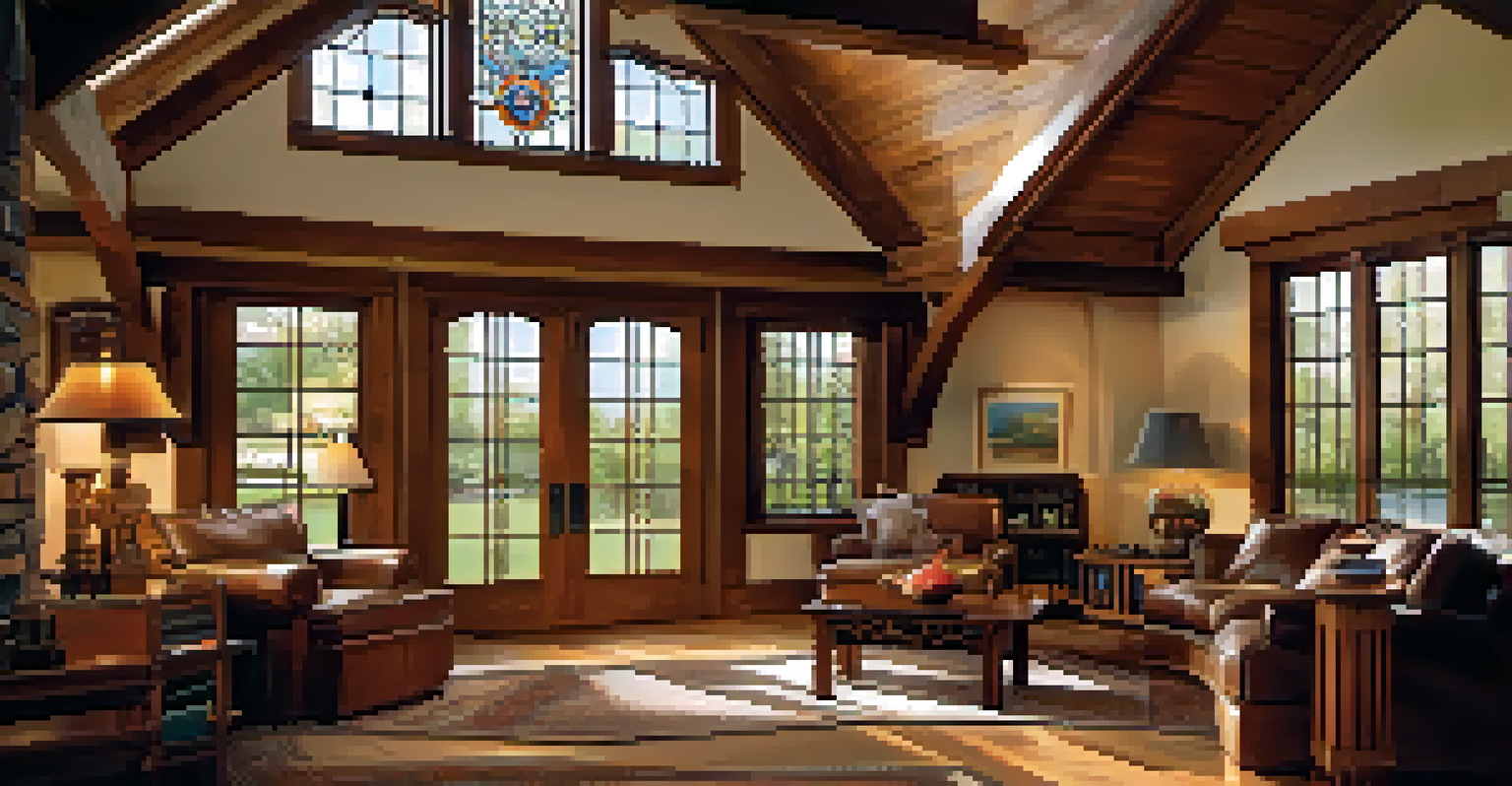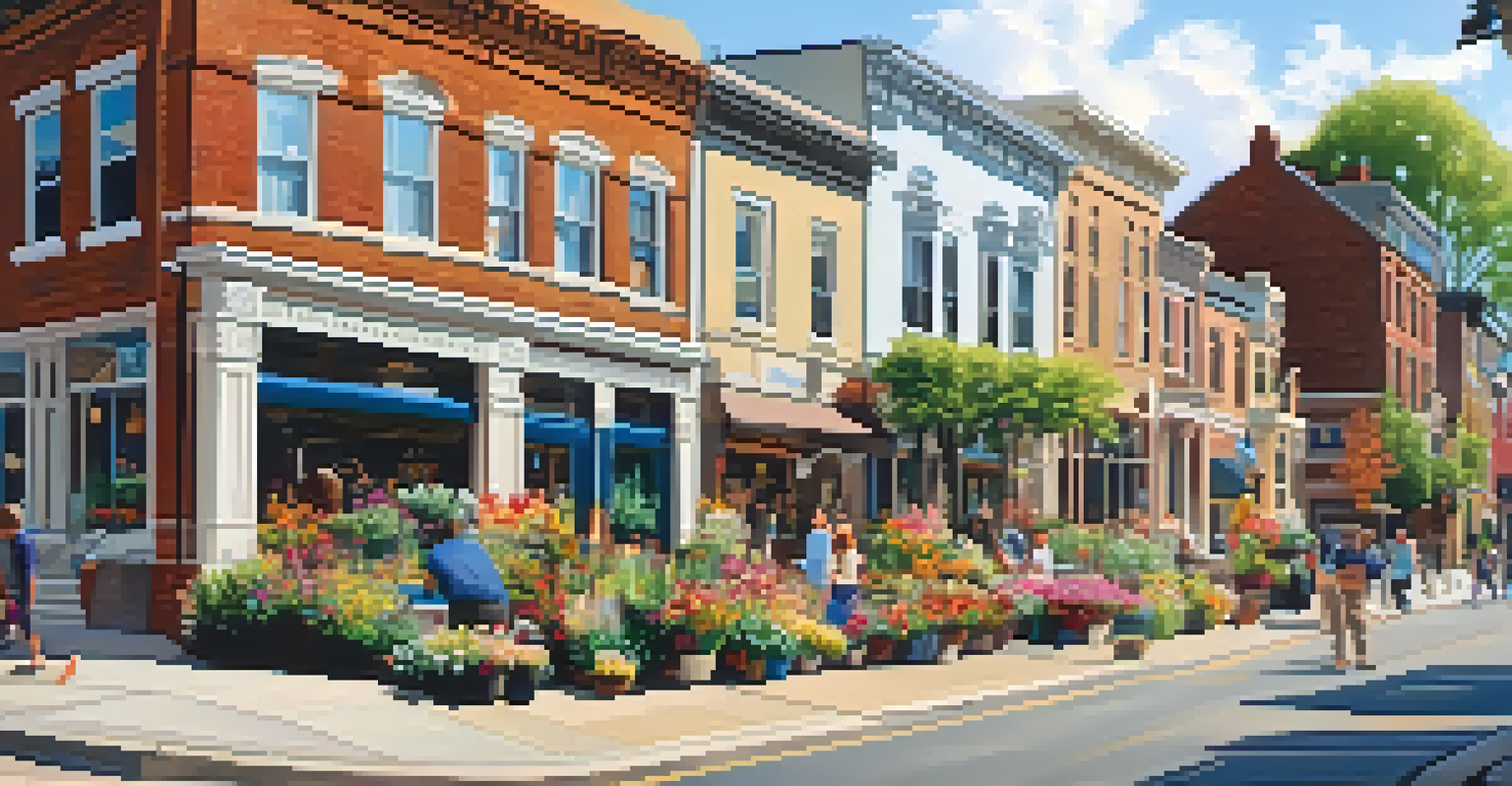The Arts and Crafts Movement in Rochester's Architecture

Introduction to the Arts and Crafts Movement
The Arts and Crafts Movement emerged in the late 19th century as a response to industrialization. It championed traditional craftsmanship and sought to elevate the decorative arts, emphasizing quality over mass production. This movement was not just about aesthetics; it also aimed to improve the quality of life through art and design.
Have nothing in your houses that you do not know to be useful or believe to be beautiful.
In Rochester, New York, the movement found fertile ground, influencing architects and designers alike. The city became a canvas for innovative ideas that celebrated natural materials and simple forms. This architectural shift brought a new kind of beauty to the urban landscape, one rooted in nature and handcrafted details.
Understanding the Arts and Crafts Movement helps us appreciate the values it brought to architecture. It was a call to slow down and appreciate the beauty in craftsmanship, a theme that resonates even today in our fast-paced world.
Influential Figures in Rochester's Arts and Crafts Scene
Rochester's Arts and Crafts Movement was shaped by several key figures who played crucial roles in its development. Notable architects like Claude Bragdon and Frank Lloyd Wright contributed their unique visions, blending local materials with innovative designs. Their work not only enhanced the city's architectural landscape but also inspired future generations.

Bragdon, in particular, was known for his integration of artistic elements into functional spaces. His designs often featured intricate woodwork and stained glass, reflecting the movement's emphasis on craftsmanship. Similarly, Wright's approach to architecture, with its harmony with nature, was evident in some of his projects in the Rochester area.
Craftsmanship Over Mass Production
The Arts and Crafts Movement emphasized traditional craftsmanship and quality, advocating for a deeper appreciation of handmade artistry in architecture.
These influential figures left a lasting legacy, showcasing the potential of architecture to reflect cultural values. Their work serves as a reminder of the importance of creativity and personal expression in our built environment.
Characteristics of Arts and Crafts Architecture
The hallmark of Arts and Crafts architecture lies in its emphasis on handcrafted details and natural materials. Buildings from this era often feature exposed beams, intricate woodwork, and stone facades that connect them to the environment. This design philosophy invites us to appreciate the raw beauty of materials rather than hiding them behind layers of ornamentation.
The best buildings are those that are built on the site, with the materials of the site, and with the people of the site.
Another defining characteristic is the focus on craftsmanship and artisanal techniques. Architects and builders aimed to create structures that were not only functional but also beautiful, often involving local artisans in the construction process. This collaboration led to unique buildings that tell stories of their creators and the materials used.
Lastly, Arts and Crafts architecture often incorporates elements of nature, with designs that blend seamlessly into their surroundings. This connection to the natural world encourages a sense of tranquility and harmony, making these structures feel like an extension of the landscape.
Notable Buildings in Rochester
Rochester boasts several notable buildings that exemplify the principles of the Arts and Crafts Movement. One standout is the George Eastman Museum, originally designed as a private residence, which features beautiful woodwork and an inviting layout. Its design reflects the movement's values, showcasing craftsmanship and a strong connection to the outdoors.
Another significant structure is the Taylor House, which embodies the movement's aesthetic with its rich materials and detail-oriented design. This residence highlights how Arts and Crafts principles can create a warm and welcoming atmosphere, making it a cherished part of Rochester's architectural heritage.
Rochester's Architectural Influence
Rochester became a significant hub for the Arts and Crafts Movement, fostering collaboration among architects and artisans that shaped innovative design principles.
These buildings not only serve as functional spaces but also as reminders of a time when craftsmanship was paramount. They continue to inspire architects and homeowners who value quality and artistry in their designs.
Rochester's Role in the National Arts and Crafts Movement
Rochester played a pivotal role in the broader context of the Arts and Crafts Movement across the United States. The city's vibrant artistic community fostered dialogue and collaboration among architects, designers, and artisans. This exchange of ideas helped to shape the movement, making Rochester a notable hub for innovation in design.
As one of the early adopters of Arts and Crafts principles, Rochester showcased how these ideas could transcend mere aesthetics to influence lifestyle. The city's embrace of handcrafted goods and locally sourced materials set a precedent for sustainable living and ethical production that is increasingly relevant today.
By understanding Rochester's contributions to the Arts and Crafts Movement, we can appreciate how local initiatives can impact national trends. This reinforces the idea that art and architecture are deeply intertwined with community values and cultural identity.
The Legacy of the Arts and Crafts Movement Today
The legacy of the Arts and Crafts Movement remains relevant in today's architectural landscape. Many contemporary architects draw inspiration from its principles, focusing on sustainability, craftsmanship, and the use of natural materials. This revival reflects a growing appreciation for artisanal quality and a desire for spaces that foster well-being.
In Rochester, the impact of this movement can still be seen in the city's architectural preservation efforts. Many buildings from this era have been lovingly maintained or restored, serving as a testament to the enduring value of craftsmanship. These efforts not only preserve history but also promote a sense of pride within the community.
Legacy of Sustainability and Beauty
The enduring influence of the Arts and Crafts Movement is seen today in architecture that prioritizes sustainability, craftsmanship, and a connection to nature.
Ultimately, the Arts and Crafts Movement teaches us that architecture is more than just buildings; it is an expression of our values and culture. By embracing its principles, we can continue to create spaces that are both functional and beautiful, enriching our lives and our communities.
Conclusion: Embracing Arts and Crafts in Modern Architecture
As we conclude our exploration of the Arts and Crafts Movement in Rochester's architecture, it’s clear that its influence is both profound and lasting. The movement invites us to appreciate the beauty of handcrafted work and the importance of connecting our buildings to the natural world. These ideals are not just relics of the past; they are relevant to our contemporary design challenges.
By embracing the principles of the Arts and Crafts Movement, modern architects can create spaces that resonate with authenticity and purpose. This approach encourages us to prioritize craftsmanship and sustainability, values that align with today's environmental consciousness.

In a world often dominated by mass production, the Arts and Crafts Movement stands as a reminder of the beauty found in individuality and care. As Rochester continues to celebrate its architectural heritage, it also paves the way for a future that honors these timeless values.